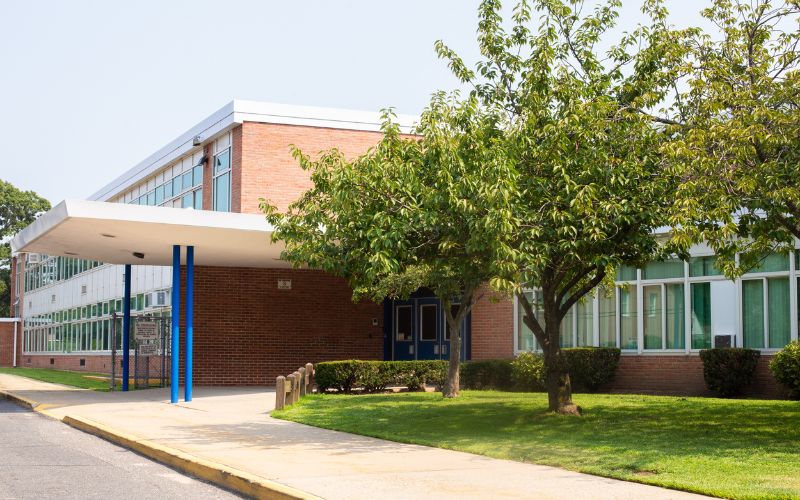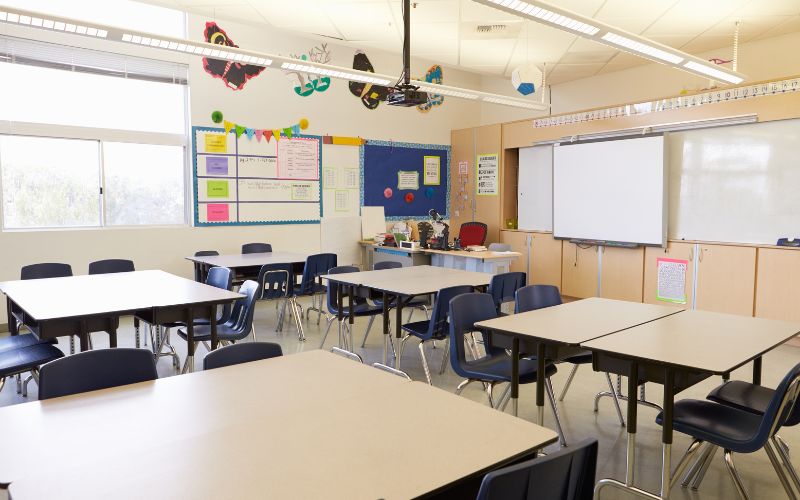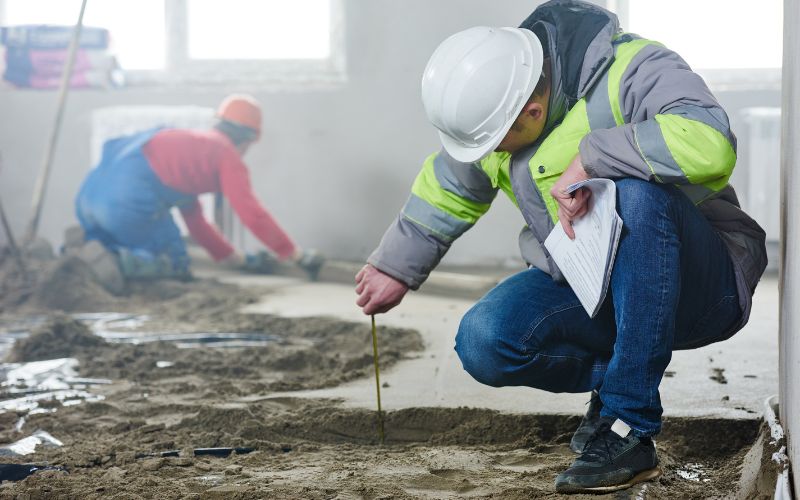The RAAC scandal has gripped the nation over the weekend after the Government announced on Thursday night that more than 150 schools were to close immediately due to the presence of unsafe concrete in their buildings.
Amidst the media furore we sat down with Managing Director, Alex Hurn, to discuss how worried schools should really be about the use of reinforced autoclaved aerated concrete in their buildings.
Why has RAAC made headlines recently?
Over the summer holidays, schools were undergoing their routine maintenance works and safety checks and it was during these procedures that RAAC had been identified in a number of educational buildings – but its presence was deemed “low risk”.
That was until the sudden collapse of a single beam, previously classed as “safe”, that triggered the closure and part closure of more than 150 schools across the country.
But the fact that this wasn’t spotted earlier, and the Government has only just decided to close schools due to safety concerns, days before kids were due to go back, is shocking.
For those who don't know, what is RAAC?
Its full title is quite a mouthful; reinforced autoclaved aerated concrete – RAAC for short. It is a lightweight concrete with an open bubbly texture.
It’s weaker than the concrete used in today’s construction projects and has a lifespan of 30 years, at most!
RAAC was commonly used for flat roof structures but has been found on sloped and pitched roofs in the past, and on occasion in walls and floors too.

So, how dangerous is it?
The older the concrete the more dangerous it is. That being said, even RAAC used the 1980s is just as dangerous because all RAAC is now past that 30-year threshold.
RAAC becomes weaker when exposed to moisture so, along with the aging process, weathering, and a number of environmental factors, it’s completely unsafe to have RAAC present in any building because it is now at its weakest point.
The Government even put a stop to its usage in construction projects during the 1980s because properties built with the concrete in the 1960s were already showing signs of deterioration back then!
However, it wasn’t until 2018 when a ceiling at Singlewell Primary School, in Kent, collapsed that the Department for Education decided to issue warnings and urgent appeals to schools to get their roofs checked.
The eeriest part about it was that the ceiling showed no signs of structural stress the day before the incident.
How do schools know if they have RAAC or not?
This is where it’s vital to have a chartered building surveyor examine the property. They can identify any defects, check the roofs and structural supports to see if there are any issues that need addressing.
Staff may be able to visually spot ‘crumbly’ concrete. If it’s RAAC, it will crumble at the touch of a hand but it’s always best to contact an expert in any case.
The Department for Education has released guidance on RAAC for schools who are unsure on their next steps. Additionally, a level 2 or a level 3 building survey can also provide vital clarity on your schools RAAC situation.
Is RAAC easy to identify?
I think a lot of people believe that they would know if they had dodgy concrete in their property but it’s not always visible to the naked eye.
If RAAC has been painted over, it will not crumble. Additionally, RAAC can be hidden behind ceiling panels so they may need to be removed or loft access could be required.
Typically, RAAC panels are either grey or white with arc-shaped stripes across the face, with a slight chamfer on each edge. Measurements often vary, which is why it’s important to have a specialist check this for you!

Is RAAC only found in schools?
No, it can be found in other public sector buildings like hospitals. It’s even been found in social housing properties.
Why was RAAC used in the first place?
The UK was heavily bombed during the Second World War, particularly in the South of England and this type of concrete was cheap and easy to come by.
It was a short-term solution that was decided in the 1950s to rebuild schools, hospitals, and other buildings that had been damaged during the war.
RAAC was praised for its excellent thermal insulation properties and for how well it supported other structures in the 60s through to the beginning of the 80s before initial concerns were raised, but now it’s time to replace this concrete with safer, solid materials.
How can building surveyors help the situation?
Building surveys are like an MOT for properties. They provide a valuable insight into the wellbeing of the building and can identify any problems or potential issues that may arise further down the line.
By getting the help of a chartered building surveyor, schools will be able to efficiently respond to the RAAC crisis and futureproof their school property which can reap numerous benefits for years to come.

Finally, how worried should schools really be?
Honestly? They should be extremely worried.
RAAC has been ignored for way too long now and school closures aren’t enough. All RAAC is dangerous and poses a significant risk to life.
Not only will its age have affected it's condition, but a number of environmental factors on top of its natural aging process will have completely weakened the concrete by now so, it's crucial that schools seek the advice from an expert who can help.
Who are we?
Sillence Hurn’s Chartered Building Surveyors are RICS qualified with extensive experience of building surveying in schools, colleges, and universities across London and the South of England.
From advice around feasibility, cost planning, undertaking the work in the current market, specifying works, overseeing and managing the implementation of changes, our chartered building surveyors will be able to identify any upgrades and advise you on the best measures going forward.
Read more about our solutions here:
Technical due diligence
Project management
Dilapidations consulting
Cost management
Monitoring Surveying
Party Wall
Contract Administration
Planned Preventative Maintenance
Email us at enquiries@sillencehurn.co.uk or call our Southampton team on 02380 014786 / London at 020 3143 2128




